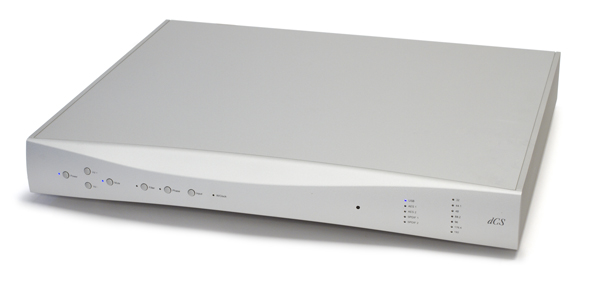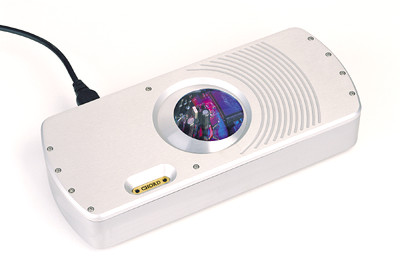With its transport, DAC, clock, and upsampler, the flagship four-box dCS Vivaldi system is a magnificent thing. It is, however, exorbitantly expensive and difficult to set up, and it necessitates a considerable quantity of living space. The Debussy entry-level model, which shares most of its technology, is a simpler, slimmer, single-box design that doesn’t sound that distinct. It also includes the company’s unique custom-designed Ring DAC, which is smaller, easier to use, and significantly less expensive (£7,500 at the time of debut in 2009).
Unlike almost all other manufacturers’ products, this bespoke digital-to-analogue conversion board does not use off-the-shelf DAC chips. Rather, the 5-bit oversampling device spins all digital signals up to 2.822 or 3.07MHz, then performs complex digital signal processing before converting them to analogue. Clock jitter is reduced thanks to a clever multi-mode phase-locked loop, and filtering is improved thanks to fast DSP processors. In comparison to older dCS models, high capacity FPGAs (Field Programmable Gate Arrays) provide higher logic capacity and expand the opportunity for additional features and advancements.
The Debussy was also the first DAC to feature the company’s patented asynchronous USB technology, which allows it to draw digital audiostreams from any current PC or Mac computer through USB and manage the clocking so that the PC or Mac no longer has control over the data. This considerably lowers jitter and improves the sound quality of music played on computers, which is why practically every other DAC maker now uses this technology.
The USB 2.0, AES3, Dual AES, and S/PDIF (coaxial) inputs are all included on the device. If you don’t want to use a preamplifier, there’s a digital volume control allowing direct connection to a power amplifier (maximum output can be either two or six volts to suit). There are two switchable digital filters on the unit, one for linear phase with pre-ringing and the other for non-linear phase without pre-ringing. It can be locked to a dCS Master Clock-generated external word clock signal. Based on previous experience with the Paganini, this should result in a significant sound upgrade, with increased clarity and resolution.
Debussy may also be updated with software upgrades via a dCS update disc or a linked computer on a regular basis, allowing it to add new capabilities and react to changes in digital formats, according to the manufacturer. One stereo pair of male balanced XLRs and one pair of RCA phono outs, as well as an IEC mains in, are located on the back panel. The new casework is stunning; the sleek anodized aluminium box is large enough to house the many chips within (as the Ring DAC requires), but tiny enough (at 445x392x65mm) to not take up too much space.
The sound of the dCS Ring DAC is unmistakable; it has an inherent smoothness that some would mistake for dullness. Using a good pair of speakers, though, you’ll find the Debussy to be an unfailingly even sounding device that lacks the laser-etched-into-glass midband that virtually every other DAC possesses. You won’t be jumping behind the sofa before the first four-bar phrase if you feed it a bright, bracing mid-eighties recording like Sly and Robbie’s Language Barrier, packed with mid-eighties digital synths and drum machines, plus lots of percussive banging and crashing from Messrs Dunbar and Shakespeare.
The Debussy delivers up a wealth of detail without shoving it in your face, pulling rich sources of music from the digital datastream and weaving it together in a compelling way. This isn’t the most outwardly euphonic DAC; it lacks the vigor of, say, the classic Philips 16-bit designs, but it more than makes up for it with subtlety and evenness on a whole new level. It also times exceedingly well without blatantly implying that it does; the dCS has a fragrance of high-speed open reel tape about it, such is its seamless assurance.
The lack of glare and an incredibly extended and assured bass give this DAC a startling fulsome sound. This isn’t due to any coloration in the lower midband; rather, it’s due to the lack of glare and an extraordinarily extended and assured bass. This is noticeable on CD, but even more so on hi-res via USB, where the correct track may sound fantastic – as any hi-res digital enthusiast knows, not all remasters are made equal! The Debussy excels with the appropriate recording, providing a delightfully large and highly defined three-dimensional soundstage, superb dynamics, and an effortless rhythmic character that makes any style of music enjoyable. I’ve heard alternative designs that give a more “fly-by-the-seat-of-your-pants” presentation, making things sound more fascinating, but I’d still go with the dCS for consistency over a wide range of program material.
The dCS Debussy symbolizes all that is wonderful about high-end audio: it is beautifully built, exquisitely engineered, and styled with real imagination. It’s affordable enough that it’s not just for movie stars and Premier League footballers, yet it delivers performance that’s nine tenths as good as anything else on the market. It’s still one of the best-value hi-fi items on the market five years later.







